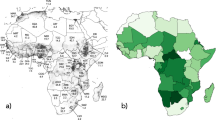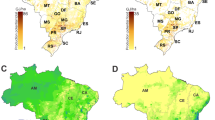Abstract
Choice of Essentials IT may be assumed that well-organized peoples work within the limits of more or less deliberate choices of essentials as modified by the accidental and the unpredictable. To-day the people of the United States insist on a high standard of living as one choice among a number of essentials, because access to the world's wealth, or the power to create it, are now taken for granted, thanks chiefly to geographical discovery, the inventions that have grown out of modern physics and chemistry and the crop changes due to plant introductions and plant breeding. In Britain, the post-war standard of living has at times seemed as important as the War itself. Housing now has first priority in post-war plans, civilian supplies second, and manufacture for overseas trade third. It is held that the War will not seem won to the returning soldiers if decent places to live in are not assured.
This is a preview of subscription content, access via your institution
Access options
Subscribe to this journal
Receive 51 print issues and online access
$199.00 per year
only $3.90 per issue
Buy this article
- Purchase on Springer Link
- Instant access to full article PDF
Prices may be subject to local taxes which are calculated during checkout
Similar content being viewed by others
References
Rasmussen, W. D., Colonia Tovar, Venezuela, "Agric. Hist",17, 156 (1943).
Cumberland, K., Geol. Rev., 34, 77 (1944).
Swynnerton, C. F. M., "How Forestry May Assist towards the Control of the Tsetse Flies". Appendix II in Troup's "Colonial Forest Administration", 439 (London: Oxford University Press, 1940.)
Gillman, C., "A Reconnaissance Survey of the Hydrology of Tanganyika Territory in its Geographical Settings", Tanganyika Territory Water Consultant's Report No. 6, 1940 (Government Printer, 1943.)
J. Franklin Inst., 237, 251 (1944).
Crist, R. E., "Cultural Cross Currents in the Valley of the Rio São Francisco", Geol. Rev. (1944).
"La Vida en la Amazonia Peruana" (1944).
"La Escasez de Tierras Cultivadas y sus Consecuencias", in "Tierra y Población en el Peru" (Lima, 1938).
James, P. E., Michigan Academy Sci., Arts and Letters, 25, 385 (1939).
Diffe, B. W., Hispanic Amer. Hist. Rev., 20, 426 (1940).
Forsyth, W. D., "The Myth of Open Spaces", 62 (1942).
Alsberg, C., "The Food Supply in the Migration Process", in "Limits of Land Settlement", 50 (1937).
Coulter, J. W., "Fiji: Little India of the Pacific", 116 (1942).
Author information
Authors and Affiliations
Rights and permissions
About this article
Cite this article
BOWMAN, I. Land Settlement and Resource Development*. Nature 155, 5–10 (1945). https://doi.org/10.1038/155005a0
Issue Date:
DOI: https://doi.org/10.1038/155005a0
Comments
By submitting a comment you agree to abide by our Terms and Community Guidelines. If you find something abusive or that does not comply with our terms or guidelines please flag it as inappropriate.



